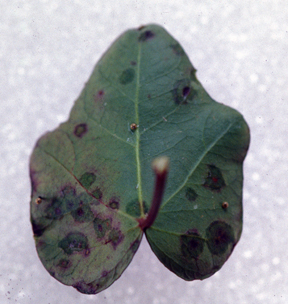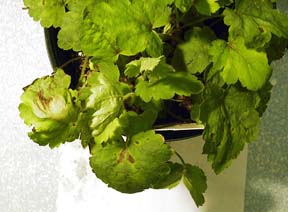Scouting for disease: Bacterial leaf spot
Editor’s note: This article is from the archives of the MSU Crop Advisory Team Alerts. Check the label of any pesticide referenced to ensure your use is included.
Pathogen: Pseudomonas spp. and Xanthomonas spp.
Hosts include: Astilbe, Chrysanthemum, Delphinium, Echinacea, Heuchera,
Hypericum and Rudbeckia.
Symptoms: Disease symptoms include water-soaked lesions on foliage that darken with age. Lesions may be bordered by the leaf venation.
Spread: Bacteria on the plant surface are easily spread
to nearby plants by splashing water from rain and irrigation.
Asymptomatic plants can serve as a source of inoculum.
Management: Bacterial pathogens can survive and reproduce on
the surface of asymptomatic plant tissues. Disease symptoms develop once
the pathogen reaches high population levels on the plant surface.
Sanitation is especially important. Workers should wash their hands
after handling diseased plants. Foliage should not be handled when it is
wet. Symptomatic plants should be destroyed. Avoid overhead irrigation
or time irrigation to minimize leaf wetness. Succulent tissue is
especially susceptible to infection. Most fungicides are not effective
against bacteria. Copper-based products are helpful in limiting
populations of surface-borne populations of bacterial pathogens.
Note: Identification information for more plant diseases is available in the field guide A Pocket Guide for IPM Scouting in Herbaceous Perennials. To order, call 517-353-6740.



 Print
Print Email
Email




